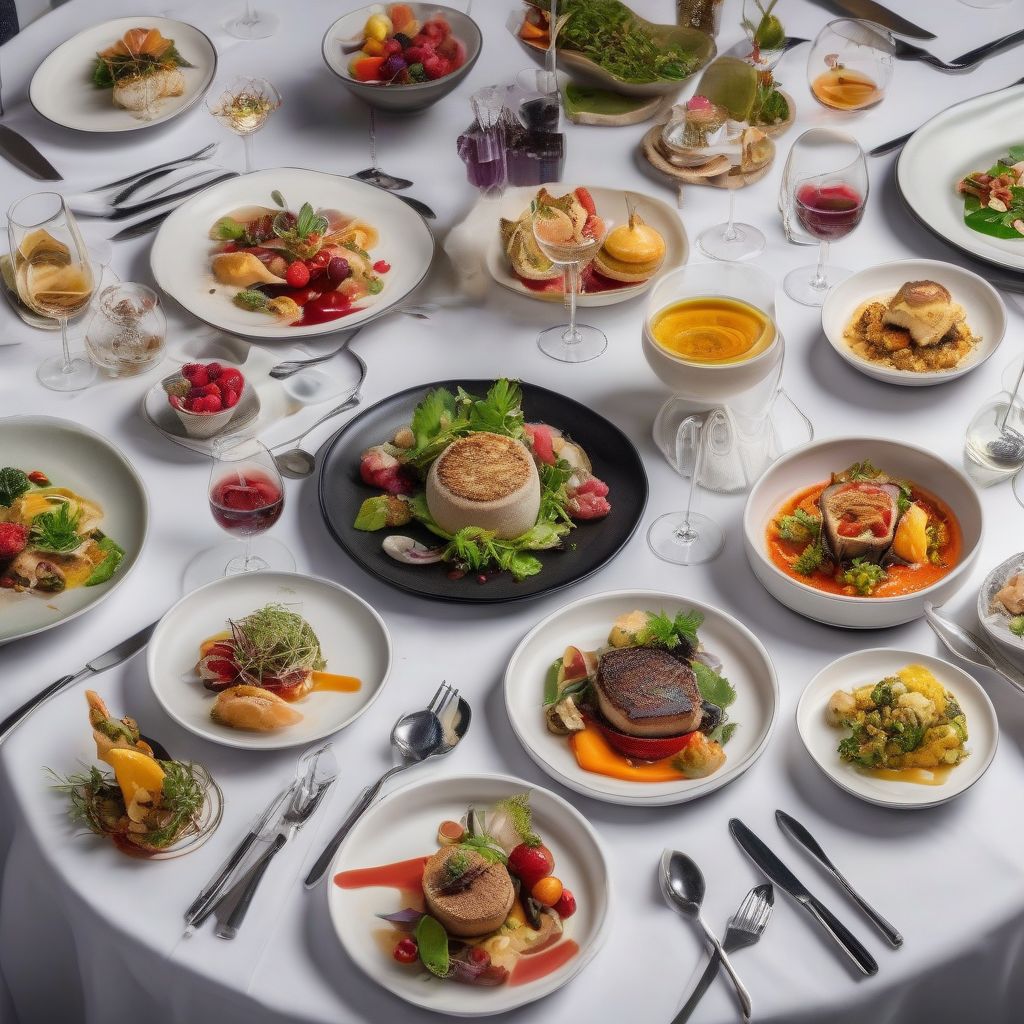Imagine biting into a delicate macaron, its sweet, almond flavor transporting you to a Parisian patisserie. Or perhaps you savor a rich, creamy risotto, feeling a connection to the generations of Italian cooks who perfected this dish. Gourmet cuisine has a way of capturing our senses and transporting us through time and across continents. And nowhere is this truer than in Europe, the birthplace of so many culinary traditions we cherish today.
As a nutritionist and meal-prep coach, I’m always fascinated by the history of food and how it shapes our modern palates. So, let’s embark on a delicious journey to explore the fascinating history of gourmet cuisine in Europe, from its ancient roots to its modern-day incarnations.
From Rustic Fare to Royal Feasts: The Ancient Beginnings
While we often associate gourmet cuisine with elaborate techniques and luxurious ingredients, its story begins surprisingly humbly. In ancient Greece and Rome, the emphasis was on fresh, seasonal ingredients and simple preparations. Think grilled fish drizzled with olive oil, freshly baked bread dipped in garlicky sauces, and honey-sweetened desserts.
However, even in these early times, the seeds of gourmet were being sown. The Romans, with their vast empire, had access to a wealth of ingredients and spices from across the known world. They developed sophisticated methods of food preservation and even published cookbooks, like Apicius’s “De Re Coquinaria,” which documented elaborate recipes and culinary techniques.
The Rise of Haute Cuisine: The Medieval and Renaissance Periods
The Middle Ages saw Europe fragmented into kingdoms and fiefdoms, and culinary traditions developed along regional lines. Yet, amidst the political upheaval, a new era of gourmet cuisine was brewing in the grand kitchens of medieval castles.
Aristocratic families spared no expense in showcasing their wealth and status through elaborate feasts. These feasts weren’t just about sustenance; they were theatrical displays of culinary prowess, featuring exotic spices like saffron and cinnamon, elaborately presented dishes, and intricate sugar sculptures.
The Renaissance marked a turning point in European history and cuisine. As trade routes reopened and new ingredients poured in from the East and the New World, European palates were forever changed. Tomatoes, potatoes, chocolate, and coffee made their way onto European tables, sparking a culinary revolution.
Refinement and Revolution: The Enlightenment and Beyond
The 18th century Enlightenment brought a renewed emphasis on reason and order, and this extended to the culinary arts. In France, chefs like Marie-Antoine Carême elevated cooking to a science. Carême, known as “the chef of kings and the king of chefs,” emphasized elegant presentation, refined sauces, and meticulously executed techniques. He is credited with establishing the foundation for haute cuisine, a style of cooking characterized by precision, artistry, and the use of the finest ingredients.
The Birth of Restaurants and the Democratization of Gourmet
The French Revolution (1789-1799) had a profound impact on European society, including its culinary landscape. With the aristocracy overthrown, many chefs who once served in noble households found themselves without employment. Some opened restaurants, making fine dining accessible to a wider public for the first time.
The 19th and 20th centuries witnessed the rise of culinary icons like Auguste Escoffier, who codified French cuisine in his influential cookbook, “Le Guide Culinaire,” and Georges Auguste Curnonsky, who championed regional French cooking. These culinary pioneers helped to shape modern gourmet cuisine, ensuring its legacy of innovation and excellence.
Modern Gourmet: A Fusion of Tradition and Innovation
Today, gourmet cuisine in Europe is a vibrant tapestry woven from centuries of tradition and a spirit of constant innovation. Chefs are pushing the boundaries of gastronomy, incorporating global influences, experimenting with molecular gastronomy, and embracing sustainable, locally sourced ingredients.
 European Gourmet Cuisine
European Gourmet Cuisine
From Michelin-starred restaurants to cozy neighborhood bistros, Europe offers a truly unparalleled culinary experience. Whether you’re indulging in a multi-course tasting menu or savoring a simple plate of pasta made with love, you’re partaking in a rich culinary heritage that spans centuries.
A Taste of History on Your Plate
As we’ve journeyed through the history of gourmet cuisine in Europe, we’ve seen how food has the power to reflect cultural shifts, technological advancements, and artistic expression. It’s a reminder that the food we enjoy today is a gift passed down through generations, a delicious tapestry woven from tradition, innovation, and a passion for the art of good living.
So, the next time you find yourself savoring a delectable meal, take a moment to appreciate the rich history on your plate. And if you’re feeling inspired to recreate some of these culinary masterpieces at home, I encourage you to explore the world of European gourmet cooking. You might just discover your next culinary passion!
Do you have a favorite European gourmet dish or a particular period in culinary history that fascinates you? Share your thoughts in the comments below! And be sure to explore my other blog posts, where we delve deeper into the techniques, influences, and must-try dishes of European gourmet cuisine:
- How to Master the Techniques of European Gourmet Cooking
- The Influence of European Gourmet Food on Global Dining
- Must-Try Gourmet Dishes from Across Europe
- The Best European Gourmet Food Festivals to Attend
- Gourmet Food and Wine Pairings from Europe
[amazon bestseller=”European cuisine cookbook”]
